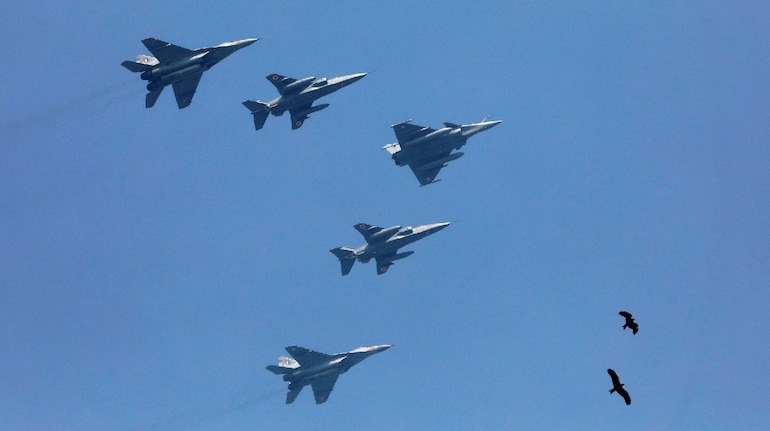
India has initiated an accelerated development plan for its ambitious fifth-generation stealth fighter jet, the Advanced Medium Combat Aircraft (AMCA). According to The Times of India, a high-level committee led by Defence Secretary Rajesh Kumar Singh is formulating a strategy to expedite the production and induction of the AMCA.
This committee includes prominent officials such as Indian Air Force (IAF) Vice Chief Air Marshal SP Dharkar, Defence Production Secretary Sanjeev Kumar, and senior representatives from Defence Research and Development Organisation (DRDO) and Aeronautical Development Agency (ADA). The panel is expected to submit its recommendations by April 2024.
Geopolitical Context and Strategic Importance
The decision to accelerate AMCA comes amid reports of Pakistan’s potential acquisition of 40 J-35A stealth fighters from China, which has also begun showcasing sixth-generation prototypes. China has already stationed fifth-generation Chengdu J-20 jets near India’s borders, at Hotan and Shigatse airfields.
Additionally, delays in Tejas jet production by Hindustan Aeronautics Ltd (HAL) have prompted the committee to formulate a roadmap for reducing development timelines and increasing production efficiency. The strategy is expected to include greater private sector involvement to expedite the AMCA's rollout.
Development of Indigenous Jet Engine
A critical focus of the committee will be the indigenous development of a 110-kilonewton thrust-class engine for the 25-tonne AMCA. The project may involve collaborations with global aerospace firms, including:
- General Electric (USA)
- Safran (France)
- Rolls-Royce (UK)
The selection of a foreign partner will play a crucial role in determining the engine's performance and production timeline.
Government Approvals and Production Timeline
In March 2024, the Cabinet Committee on Security (CCS) approved the full-scale engineering development of five AMCA prototypes at an estimated cost exceeding ₹15,000 crore. The AMCA is expected to feature:
- Stealth capabilities (internal weapons bay, serpentine air intake)
- Advanced sensor fusion
- Next-generation avionics
However, full-scale production is unlikely to begin before 2035.
IAF’s Fighter Jet Fleet Strengthening Plan
Currently, the Indian Air Force (IAF) operates 30 active fighter squadrons, well below the authorized strength of 42.5 squadrons. Over the next decade, at least eight squadrons are scheduled to retire, prompting a need for new acquisitions and fleet upgrades.
IAF aims to induct seven AMCA squadrons (126 jets), with:
- First two squadrons powered by GE-F414 engines
- Remaining five squadrons equipped with 110-kilonewton thrust-class engines
In the interim, IAF plans to strengthen its fleet with:
- 180 Tejas Mark-1A fighters
- 108 Tejas Mark-2 jets
- 114 multi-role fighter aircraft (MRFA) in partnership with foreign firms
Read More: Punjab CM Bhagwant Mann Criticizes Rahul Gandhi and Navjot Sidhu's Leadership Aspirations

 Share
Share



